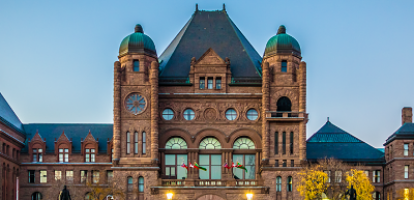From: Don Drummond
To: Canadian Budget Observers
Date: April 12, 2023
Re: Bogus Spending Restraint is not Spending Restraint
The 2023 federal budget rests its case for fiscal discipline, even restraint, on promised savings in operating expenses that amount to billions of dollars. Key budget passages include:
- “Budget 2023 proposes to reduce spending on consulting, other professional services, and travel by roughly 15 percent of planned 2023-24 discretionary spending in these areas.”
- “Budget 2023 proposes to phase in a roughly 3-percent reduction of eligible spending by departments and agencies by 2026-27.”
- “Budget 2023 announces the introduction of cross-government program effectiveness reviews, to be led by the President of the Treasury Board. The first review will examine skills training and youth programming, to determine, by Budget 2024, whether improvements can be made to help more Canadians develop the skills and receive the work experience they need to have successful careers.”
In recent federal fiscal history, we have had one highly successful cost-cutting exercise – the program review of 1995 – that went well beyond simply reducing rising spending projections and actually lowered program spending, from $123.2 billion in 1994-95 to $111.3 billion in 1996-97. The approach set out in the 2023 budget has serious shortcomings that need to be addressed if it is to be similarly successful.
Significant savings in operating expenses were announced in the 2022 budget and even earlier but not delivered. The 2022 budget contained almost exactly the same words about mounting a program review led by the President of the Treasury Board. It can only be presumed that little was accomplished over the past year.
Unlike other spending, such as Old Age Security benefits, operating spending is not driven by legislative formulae. The “status quo” projection against which the anticipated savings are measured permits some discretion on the part of budget planners. In recent years, they have first raised the projection of spending and then shown cuts from that elevated level. “We could have spent even more than we chose to” is not most people’s definition of a cut.
Duplication of the promises of past budgets, the arbitrariness of the “status quo” and the pattern of raising operating budget spending with each successive budget should lead us to focus on spending levels, not the “cuts” promised. The levels are going in one direction: up.
Last month’s budget projects operating spending $9.8 billion higher in 2025-26 than was projected in the 2021 budget and $6.6 billion higher in 2026-27 than in the 2022 budget – even after last month’s promised cuts.
How is it possible to keep the government accountable for its spending commitments when its spending target keeps moving?
All recent budgets have said their goal is to re-normalize operating spending back to the pre-COVID era. But none have showed that happening – again – not even after promised cuts. The new budget has operating spending $33.6 billion higher in 2027-28 than in 2018-19, for an average annual growth rate of 3.6 percent. That hardly seems like restraint, much less a heavy dose of it.
Does the review process to be led by the President of the Treasury Board seem promising? No. For some time now, the savings promised from spending reviews have not been achieved; quite the contrary, operating spending has been going higher and higher.
Under the Expenditure Management System, departments are mandated to do strategic reviews of all their spending. That a new process is needed suggests these ongoing reviews are not useful. Perhaps we should start by fixing them. For the coming year, the budget mentions a review of only one policy area – skills training and youth programs – out of hundreds of programs. At that pace, a thorough review will take centuries.
The budget provides no details on the review process, even though it was effectively announced some time ago. Centrally driven exercises typically have not worked well. They do not uncover the most efficient ways to save money without reducing public services and they do not engender departmental support. By contrast, the 1995 program review let departments lead with ideas for cutting, with proposals then vetted by committees of deputy ministers and ministers.
The bottom line is that the fiscal discipline, even restraint, promised in the 2023 budget through cuts in operating spending is bogus, not real.
This government came to office in 2015. It has had ample time to mount an effective spending review yet has not managed to get one underway – partly because it is so much easier to simply raise the projection of operating spending and then promise to cut from that artificially higher level. Getting beyond bogus would take a commitment and a sound process. The 1995 program review –undertaken by a Liberal government, remember – provides a model to follow.
Don Drummond is a Stauffer-Dunning Fellow at Queen’s University and Fellow-In-Residence at the C.D. Howe Institute.
To send a comment or leave feedback, email us at blog@cdhowe.org.
The views expressed here are those of the author. The C.D. Howe Institute does not take corporate positions on policy matters.
A version of this Memo first appeared in the Financial Post.





